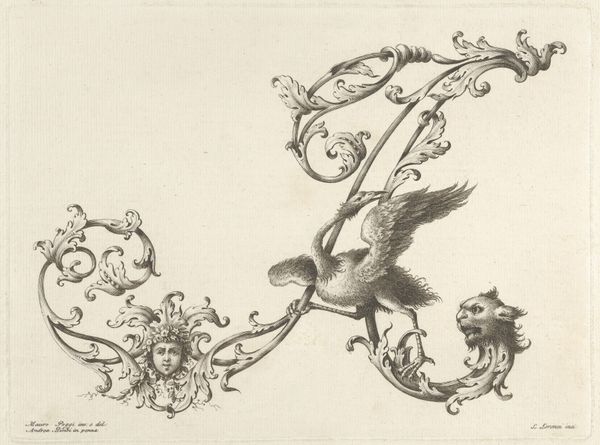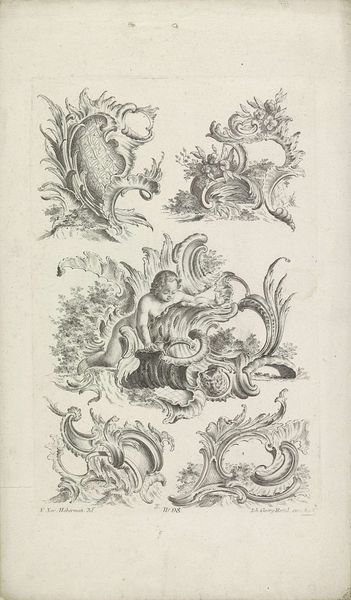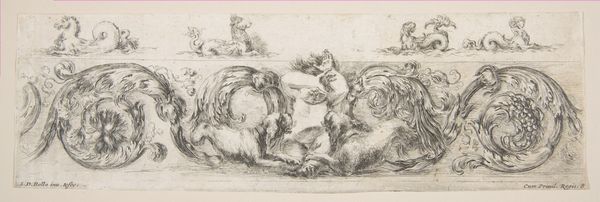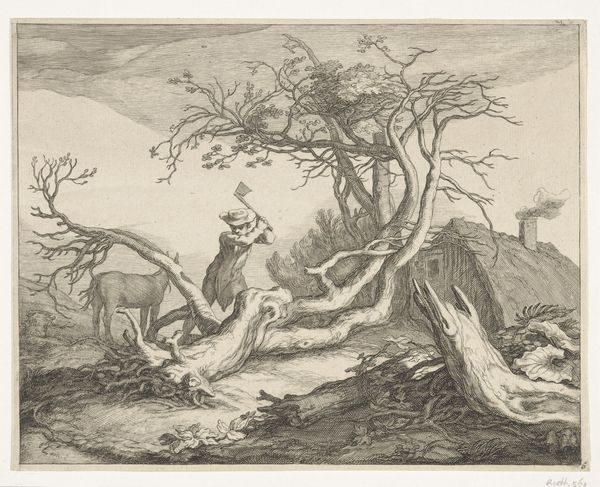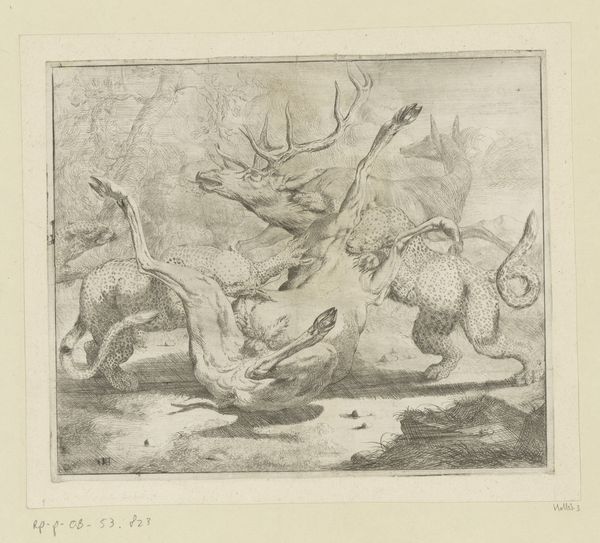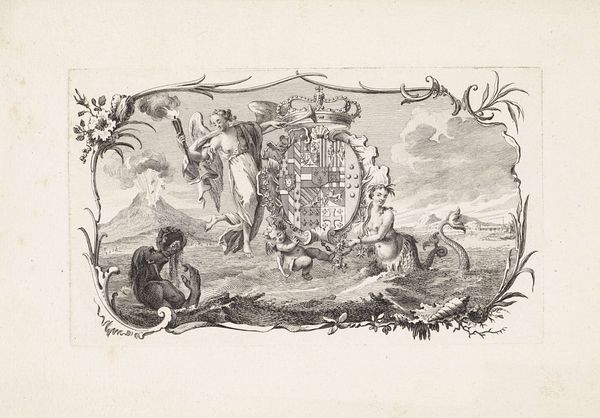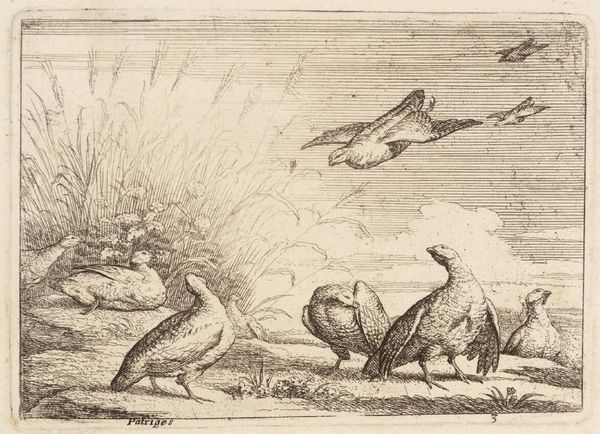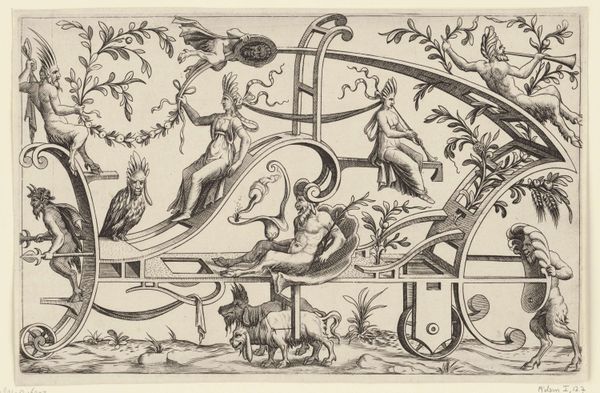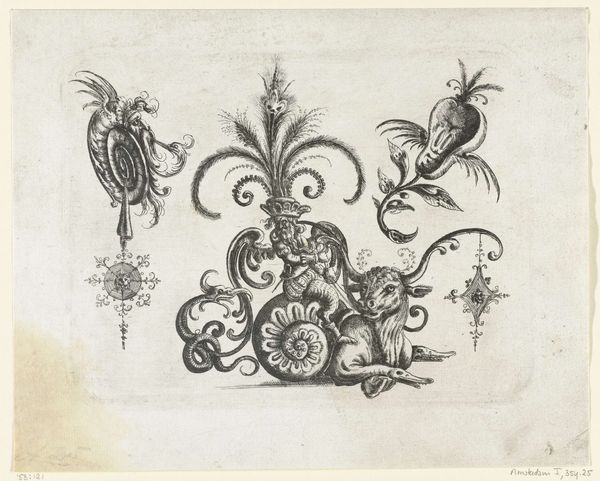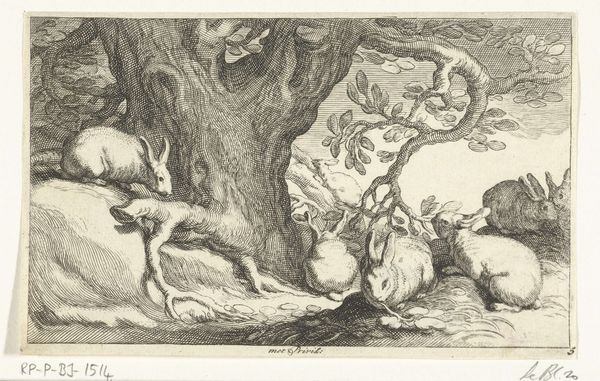
drawing, print, etching, engraving
#
drawing
# print
#
etching
#
book
#
fantasy-art
#
mannerism
#
figuration
#
grotesque
#
engraving
Dimensions: 10 1/4 x 13 9/16 x 1 1/16 in. (26 x 34.5 x 2.7 cm)
Copyright: Public Domain
Editor: This is an etching called "Neuw: Grottesken Buch" by Christoph Jamnitzer, dating back to 1610. The level of detail is striking; fantastical creatures populate the scene, each seemingly composed of disparate parts. It feels almost like a bestiary from another world. What strikes you when you look at this piece? Curator: The imagery Jamnitzer uses reflects a cultural fascination with the grotesque, popular in the late Renaissance and Mannerist periods. But grotesque isn't necessarily negative. It's about challenging established norms, remixing familiar symbols. See how animals, foliage, and architectural motifs combine to create something entirely new? Do you find these hybrids unsettling or playful? Editor: I think it’s both! There's a definite element of the absurd, yet the precision of the engraving gives them a strange kind of authority. Curator: Exactly! This tension is key. The book title suggests a systematic approach, almost like a catalogue. But a catalogue of *what*? Perhaps of possibilities, of visual metaphors exploring transformation. Consider the symbolism inherent in each component – the animals, the plants. They would have carried specific meanings for contemporary viewers. Editor: So, it’s not just about shock value? There’s a deeper meaning embedded within the imagery? Curator: Precisely. While the "grotesque" might seem purely bizarre to modern eyes, it's rooted in a visual language, drawing upon shared cultural memories and beliefs. The etching process allows Jamnitzer to disseminate these strange forms, implanting them into the cultural imagination. Look how he integrates traditional decorative elements into the bestial, reshaping conventional concepts of beauty. Editor: I never considered that. It’s fascinating to think of these images as actively shaping how people saw the world, not just reflecting it. Curator: Indeed. Symbols evolve, adapt, and sometimes revolt! That’s part of the power and persistence of visual imagery. Editor: I see that. I definitely look at it differently now, knowing there’s such rich symbolism beneath the surface. Thank you!
Comments
No comments
Be the first to comment and join the conversation on the ultimate creative platform.

